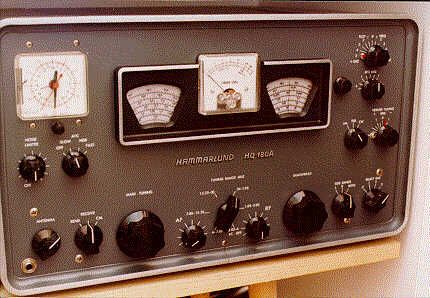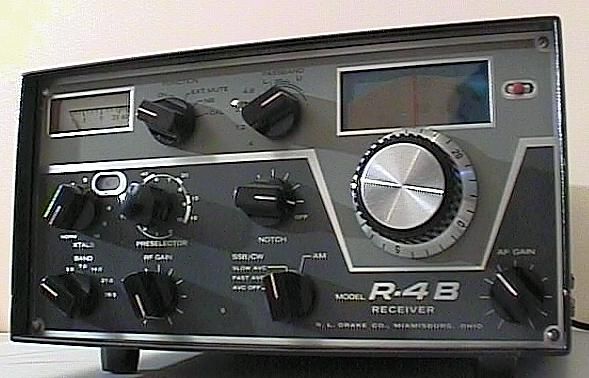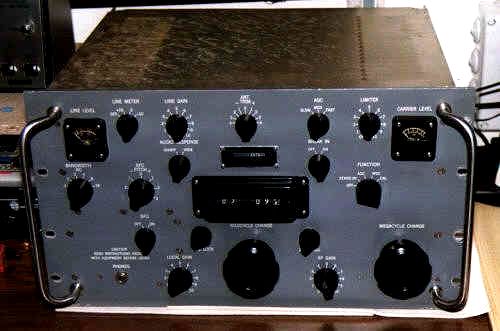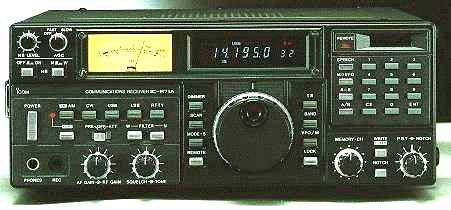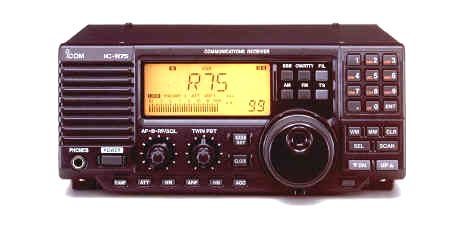| My receivers since 1963 | |
| When I was introduced to DX-ing back in 1963 I had no money of my own and I had to use the family radio, a Grundig valve receiver with 6-20 MHz shortwave in one band with a dial accuracy around 200 kHz!!! Later I bought my own Luxor reciver with the 25, 31 and 49 meters shortwave bands spread on the dial! | |
|
TRIO 9R-59 and ER-202 |
|
| I had a summer job in the construction business in 1964 and saved some 100 $ and bought my first communicationsreceiver, a TRIO 9R-59 from Japan. It covered 0,54 - 30 MHz. It had nine tubes, Q-multiplier and SSB!!! It drifted a lot. It was quite sensitive in the AM bands. My next receiver was a Trio ER202, the follower of the 9R-59. The same RF stage but much better oscillators and mixers made it much more stable. Drifted just 2 or 3 kHz in the tropical bands. |
|
|
|
|
|
Lafayett HE30/Trio 9R-59. |
Hammarlund HQ 180A. |
|
Hammarlund |
|
|
|
|
|
Worlds worst receiver Galaxy R530 |
|
| A new receiver was announced! It was 100% solid state, better than 1 kHz readout, very sensitive and had 9 MHz 8 pole crystalfilters. It had a balanced RF amplifier and diode second mixer and PLL 500 kHz bands. It was not cheap but a used my last savings and bought it. The most stupid thing I have ever done. It crossmodulated whenever more than 1 station was within 100 kHz. I lost a lot of money when I sold it and bought a Drake R4B. |
|
|
|
|
| My next receiver was a Drake
R4B with all extra crystals and the AM converter from Drake, soon
rebuilt with extra MOSFET preamplifier. My Drake made a good job, even
better when I modified it with a Sherwood filter in the first IF and a
reciprocating detector (syncronous AM!!!) Dial accuracy was better
than 1 kHz but it was not very sensitive and it had some problems with
harmonics from the VFO |
|
|
|
|
|
Drake R4B |
EAC R-390A (similar to Collins) |
|
COLLINS R390A |
|
| A DX-friend had an extra Collins R390A. I visited him and made a comparison with my Drake and returned home with two receivers. I had some problems with a ballast tube but after some modifications the R390A turned out to be an exceptional receiver. I modified it with productdetector and phase locked AM + extra 3 kHz ceramic filters both in front of and after the original IF stages. It is still going b and functions very good, but it is too heavy to bring for expeditions so I bought a little less heavy ICOM R71E with PLAM, 4 kHz filter and 2,4 kHz FL44 filter. |
|
|
The ICOM period |
|
|
|
|
| ICOM IC-R71E | ICOM IC-R75 |
| I made some modifications to the R71. The original 6 kHz filter was of no use, replaced it with a 3,1 kHz CFJ455K4. I also bought a special 1024 kHz memory card from Willco This R71 is a very good receiver. Only drawback is some noisy oscillators and the fact that it drifts when I take it to the cabin where temperature when I arrive might be -25�. The audio via the speaker is not good, I always use the recording outlet. My latest receiver is an ICOM IC-R75 with 2,8 and 3,3 kHz extra filters and the DSP. I am very satisfied with this receiver. It is very easy to use and performs very good considering the rather low prize! I have made a comparison with my old R71E on a separate page. |
|

